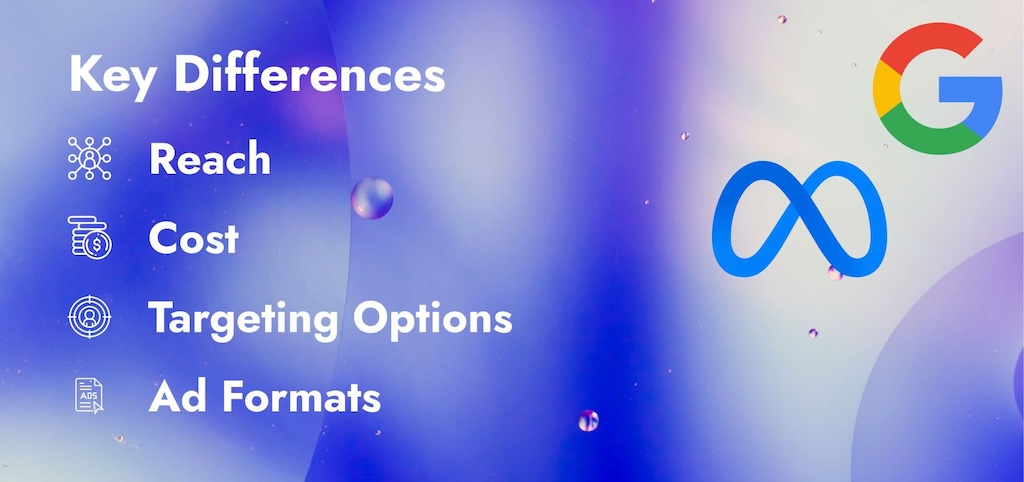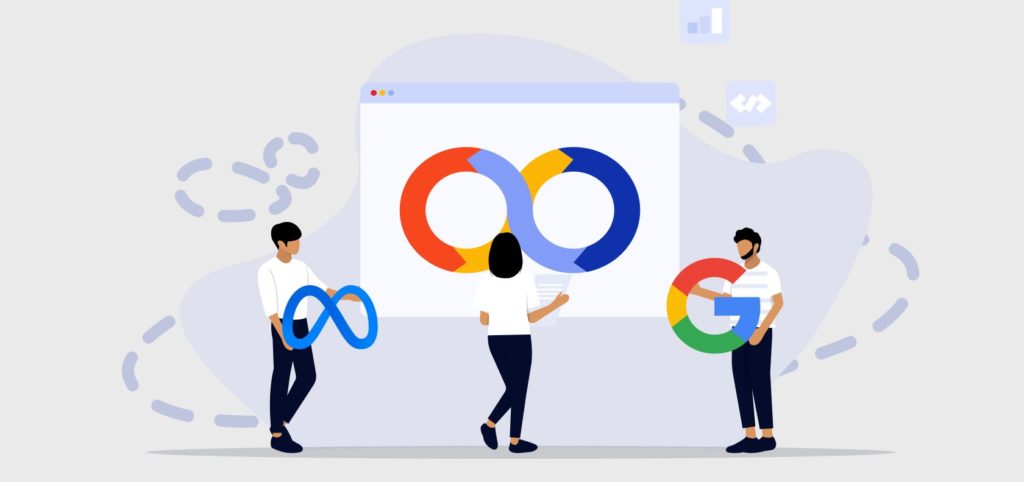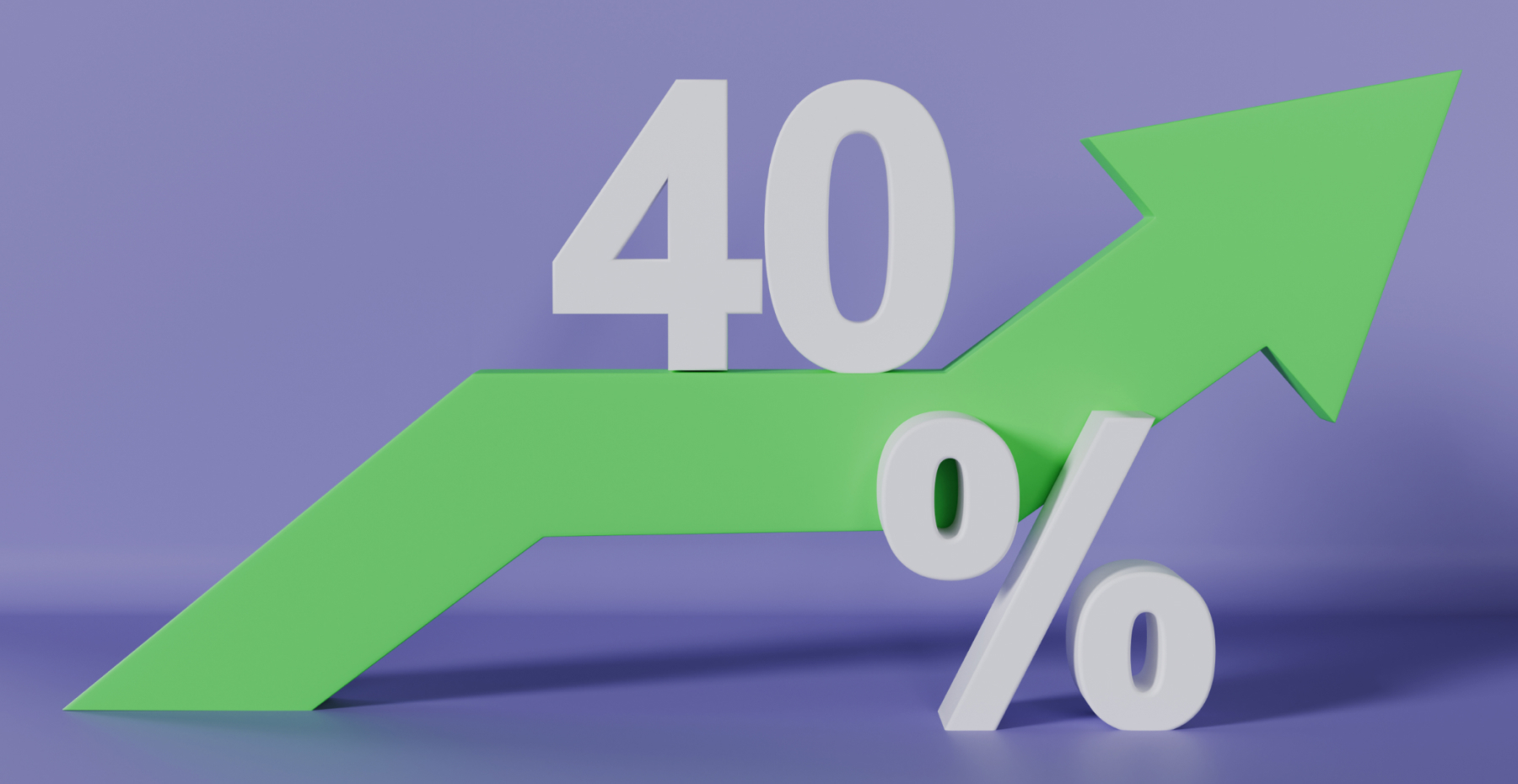Did you know that digital advertising is extremely popular in Canada and the market was in the sixth position in the world in 2023? But when you make the decision to promote your business through advertising the first dilemma is picking an appropriate platform. There are many factors to consider before you make your decision, as the performance and outcomes can vary greatly.
The top two platforms that will come to your mind first are Google Ads and Meta Ads, each serving different roles, audiences and goals. The challenge here is picking the best one for your objective. But should you pick one or start with both? Which should you use? Go for Facebook’s sophisticated targeting and visual engagement, or Google’s extensive reach and search intent? Let’s go over the main differences between these platforms, their benefits, and how to choose the one that’s ideal for your Canadian company in this article.

Google Ads: Reaching High-Intent Customers
Let’s start examining Google ads! It functions on a pay-per-click (PPC) model, meaning businesses only pay when a user clicks on their ad. This platform excels at reaching people actively searching for products or services, making it ideal for businesses targeting customers who are ready to make a purchase.
Google Ads provides extensive reach, processing over 40,000 search queries per second and accounting for more than 90% of global search network activity. Its ability to target users based on search intent—through specific keywords—ensures that your ads are seen by people already interested in what you offer.
While Google Ads can be more expensive than Facebook Ads, it offers a larger pool of potential customers. The cost is driven by competition for keywords, with certain industries—like real estate and legal services—being particularly competitive. However, the potential to attract high-intent customers can result in better conversions, making the higher cost worthwhile for many businesses.
Main Benefits of Google Ads
- High-Intent Customers
- Pay-Per-Click Model
- Extensive Reach
- Keyword Targeting
- Conversion Potential
- Tailored Campaigns
Meta Ads: Targeting with Precision and Visual Appeal
A contrasting strategy is used by Meta Ads, which emphasizes audience-based targeting utilizing comprehensive demographic and interest data. Facebook and Instagram, which together have around 3 billion monthly active users, provide companies the ability to make highly customized advertisements that target particular demographics according to their age, geography, hobbies, and online habits. Because of this, Meta Ads are perfect for increasing brand recognition and interacting with prospective buyers who might not be actively looking for things but are curious about new businesses.
The visual style of the platform, which gives marketers a variety of choices such as pictures, videos, carousels, and tales, is its strongest point. Through imaginative narrative, these visually striking advertisements may engage viewers and establish a relationship. Meta Ads are a valuable tool for businesses trying to generate memorable brand experiences.
Main Benefits of Meta Ads
- Advanced Targeting
- Cost-Effective
- Vast User Base
- Visual Engagement
- Brand Building
- Precise Retargeting
Meta Advertising vs Google Advertising: Key Differences
While both platforms offer valuable advertising opportunities, they serve different purposes and user behaviours. Here’s how they differ:

- Reach: Google Ads has a broader reach with its dominance in search engines and its Google Display Network, while Facebook Ads has a more focused reach within its social media ecosystem. Google is better for capturing users actively looking for products, whereas Facebook is more suited for engaging users through discovery.
- Cost: Facebook Ads tend to be cheaper than Google Ads, especially for brand awareness and engagement campaigns. However, Google Ads often provide a higher return on investment for businesses seeking direct conversions due to its ability to capture high-intent searchers.
- Targeting Options: Google primarily uses keywords and search intent to target users, while Facebook relies on detailed demographic and interest data to reach specific audiences. This gives Facebook an edge in creating personalized, engaging ads that resonate with user preferences.
- Ad Formats: Google’s ads are often text-based, particularly in search results, whereas Facebook offers more visually dynamic formats such as images, videos, and carousels. This makes Facebook Ads more suitable for storytelling and brand building.
Which Platform is Best for Your Business?
Choosing between Google and Facebook Ads largely depends on your business goals, audience, and budget. In general, Meta Ads are less expensive than Google Ads, particularly for campaigns aimed at raising brand awareness. But compared to Google, its reach is more limited. Here’s a breakdown to help guide your decision:
Use Google Ads if:
- You want to reach customers who are actively searching for your product or service.
- Your business relies on direct conversions, such as online purchases or lead generation.
- You have a higher budget and can compete for top keywords in your industry.
Use Facebook Ads if:
- Your goal is to build brand awareness or engage with a specific audience.
- You want to create visually engaging ads that resonate with users through storytelling and creativity.
- You’re working with a smaller budget and want to reach a broad but targeted audience.
Integrating Both Platforms for Maximum Impact
Combining Google and Meta Ads to reach various phases of the buyer’s journey helps a lot of businesses succeed. While Meta Ads cultivate prospective clients and gradually increase awareness, Google Ads can attract high-intent people who are prepared to make a purchase. For instance, you might utilize Meta Ads to retarget website visitors with more relevant, interesting content after using Google Ads to increase website traffic.

For example, at Digilite we have implemented this strategy for a Canadian leading steel-building manufacturing company. We’ve used both channels to drive traffic and generate leads. We utilized Meta Ads to retarget these visitors with interesting and pertinent content after using Google Ads to drive traffic to their website. By strengthening the relationship with potential consumers throughout their purchasing path, this dual strategy not only increases visibility but also makes sure they are at the forefront of their minds when they are ready to make a decision.
Ad Battle: Who Wins for You?
Both Google and Meta Ads offer valuable opportunities to grow your business, increase sales, and boost brand awareness. Choosing the right platform depends on your specific goals, audience, and industry.
If you’re focused on high-intent customers and can compete for top keywords, Google Ads may be the right choice. If you’re looking to build your brand and engage a more specific audience with creative ads, Meta Ads are a better fit. Consider starting with one platform and expanding to both to maximize your advertising success.
If you’re looking for expert assistance with PPC services in Toronto, working with a local agency can help you craft a strategy that aligns with your business objectives, ensuring you get the most out of your advertising budget.




